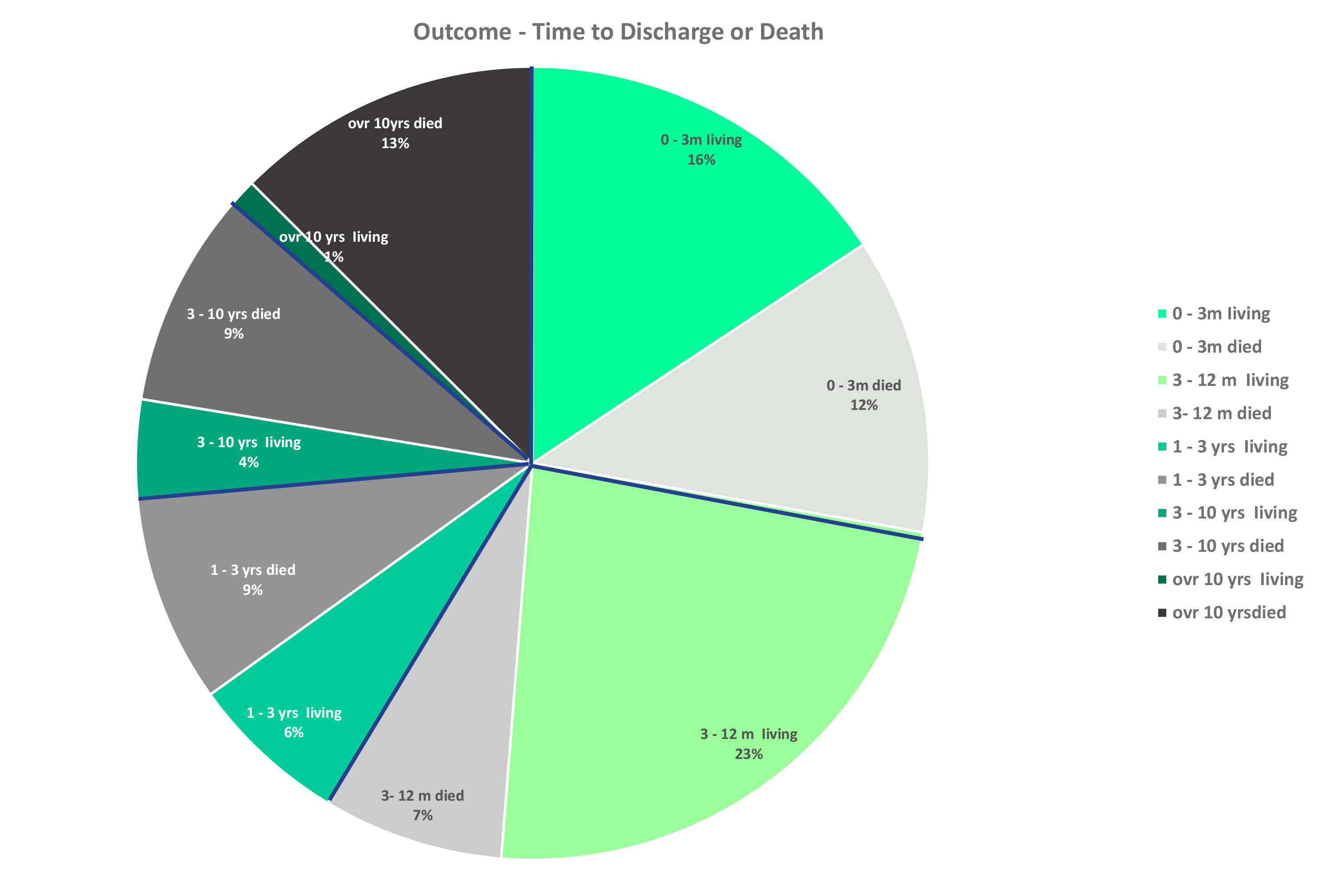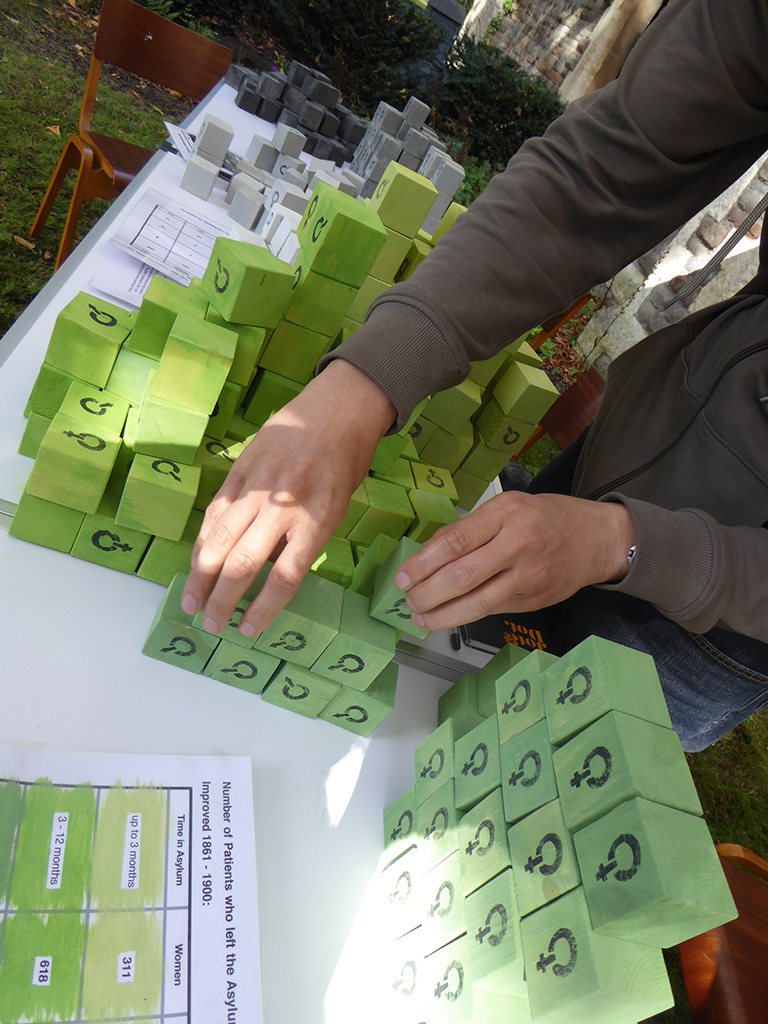
The blocks are a three dimensional graph, an attempt to bring thoughts about the patients into the museum. The legalities of confidentiality are such that only data over 100 years old can be looked at without permission of the patient or their family. So the central reason for the existence of the asylum is little in evidence in the museum.
Their aim is to start discussions about the outcomes for patients admitted to the asylum in C19th through the numbers represented in the graph. The blocks were shown at Glenside Hospital Museum’s Bristol Doors Open 11 October, 2016. A large gazebo was set up for alldaybreakfast by the front door on this beautiful autumn day.
Each block represents ten men or women and is labeled by gender and coloured, green for patients who left on their own feet, ‘restored’ or ‘relieved’, grey for those who died in the asylum. The darker the colour the longer the person was in the asylum. The unpainted blocks at the far end of the table represent people who did not have a clear outcome; they were transferred to other institutions or no outcome is recorded, or they escaped! Thirteen men and one woman are given as ‘escaped’ during the 38 years covered in my study.
Just looking down the table it is clear that the largest cohort is that of people who left between three months and a year of admission, beyond a year’s stay the numbers fall off quite sharply. Of those who died many did so in the first year. Most of those who stayed in the asylum for over ten years died there.

The blocks show that within the first year of being admitted, over half the patients left, but a significant proportion of those people left ‘feet first’. Just under half of the admissions were in for longer than a year. About 70% of people who left alive, left within a year, and about half of the people who died in the asylum died within their first year.
Overall during this time there were slightly fewer women than men admitted but men were more likely to die (perhaps they were more unwell on admission) and were more frequently diagnosed as suffering from ‘General Paralysis of the Insane’. Now know to be tertiary syphilis and fatal within about three years



